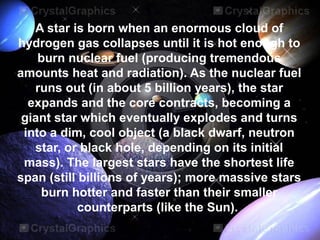1) Our solar system is located in the Milky Way Galaxy, which contains 200 billion stars.
2) Spiral galaxies have a central dense area and spiraling arms where stars often form. There are two types of spiral galaxies.
3) Our solar system consists of the sun and objects that orbit it like planets, moons, asteroids, comets, and meteors. The inner planets are small and rocky while the outer planets are large and gaseous.





























































